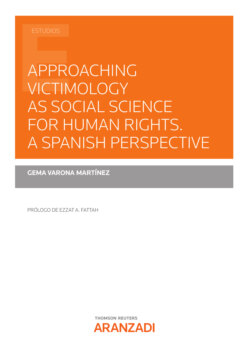Читать книгу Approaching Victimology as social science for Human rights a Spanish perspective - Gema Varona Martínez - Страница 9
На сайте Литреса книга снята с продажи.
1.4. VICTIMOLOGY: HOW?
ОглавлениеThe scientific and social contribution of Victimology towards awareness of victimisation and de-victimisation is done by means of critical reflection on very diverse victimological (quantitative and qualitative) data to draw up proposals for new paradigms and policies to improve social justice and victims’ rights. For a critical Victimology this is done through being aware of the risks of falling into essentialist (victims are mainly or just victims), antagonist (victimisers are victims’ enemies or have nothing to do with them), therapeutic/pathological (victims only or mainly need treatment) or paternalistic views (victims do not know what they want). This last perspective is related to many victims’ uneasiness with the term “victim” and their preference to be called “survivors” or “victimised/harmed persons”. According to Van Dijk (2009, p. 1) the victim label, “although eliciting compassion for victims, assigns to them a social role of passivity and forgiveness that they may increasingly find to be restraining”.
Starting from that reflexive critical framework, victimological work (researching, intervening, evaluating etc.) can be done from different interdisciplinary perspectives using quantitative, qualitative or mixed methodologies.
Image 5: Interdisciplinarity, multi-methodology and triangulation in victim (action) research
Even if we do not have consistent victimological research results, some inconclusive empirical points of departure can be highlighted with due contextualisation.
Image 6: Some points of departure and questioning in on-going research in Victimology
